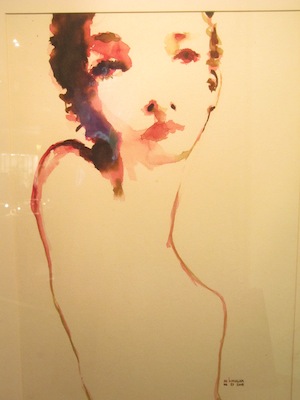it’s been quiet here, which isn’t to say that it’s been quiet where i’m at. been finishing up an MA thesis that’s gone on for too long, and is more about closure to a life lived in the academe more than anything else. while that’s happening, i’ve had more interesting conversations than usual, including conversations about art and the state of things in this country, ones that are kept off the record, unspoken of. sometimes it’s limited to Facebook, other times it just refuses to engage in decent debate and discourse, distinct from the personal.
yet there are many things to write still, conversations to be had. but it seems even brave statements of distrust and disgust, even ones that are relevant and worthy of discussion, become feed and fodder for the personal. here lies our un-critical dead end: we are a sensitive bunch of people, very few of us can handle criticism. yet in times of controversy, or just given the space to do it (blogs, newspaper columns), everyone becomes a critic in this country, everyone will claim the title.
which is fine too, were we all working with a sense of what criticism requires, what it entails, what it must necessarily work with. in recent conversations, forced to answer questions about the work i do, the blogging and the writing, and therefore my life in general (hah!), i realized that much of what i had to say reverted back to my sense of what’s relevant and important, to a sense that what i say is secondary to that text that’s in front of me, which is also always a text that’s about nation. i will never claim that i get it right all the time, or even half the time; but i will say that i come from a very clear sense of myself as spectator in the context of the tragedies and sadnesses that are in this space we all inhabit, that any cultural text necessarily sprouts from, no matter how removed these might be.
and just in case it isn’t clear, i’d like to think that any critic is a writer first, because every critic lives off of words, too, lives off of choosing the right words for capturing how she has experienced a text. and as with any writer, the only way to have the words to say, and to have a sense of what’s relevant to discuss, is to be within the enterprise of culture in this country, half the time suspending one’s notions of taste and order, the other half suspending all judgement. all the time it requires this sense of how things are never black and white anymore, that these are gray times, where notions of power and oppression are interspersed/diluted/interlaced with things that are prettier or tastier or just downright addictive.
it’s because of this that i find generalizations to be painfully unfair, if not just usually absolutely wrong. after the success of Ang Babae sa Septic Tank, this generalization was dropped —
Before it got made in the mainstream though, Ang Babae sa Septic Tank won over the less-forgiving indie film crowd, comprised mostly of hipster students and educated artsy folk who are used to seeing gritty, neo-realist dramas and have the tendency to be just a tad pretentious.
i’d like to find out where this indie film crowd hangs out, just because this girl’s got it all wrong about the indie, and the indie film, and even just the idea that there’s a crowd. had she read up on the indie, watched the indie for the past decade or so too, she’d know that this “crowd” doesn’t exist, the hipster students she’s so critical of are a recent aspect of it (and the hipsters are everywhere), and the neo-realist dramas that tend to be pretentious aren’t at all of the indie as a category, but of a kind of Pinoy film in general, indie and otherwise.
in direct contrast to such misinformed generalizations is something as honest as pinoy drama rewind which does movie and TV reviews, as well as episode recaps of contemporary soaps and seryes. this might not be the kind of critical blog that’s celebrated, but it sure as hell’s got more going for it than the misinformed being given space(s) in broadsheets like the Philippine Star. in the latter we just perpetuate the notion that all it takes is space to write and an amount of yabang. in the former, there is an effort at actually and truly coming to terms with the cultural products that we create and live with in this country, and there is a sense of humility more than anything else.
one that we should all learn from, critic and writer, young and old, in broadsheets and online, alike.
